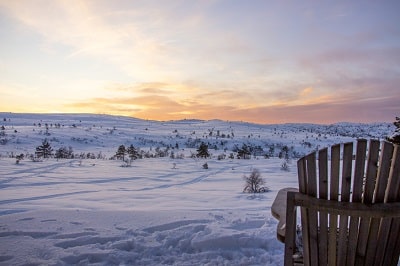Driving in Snow
Nobody likes driving in the snow and dealing with the delays that result. If you must travel in the snow, taking these steps should increase your chances of getting home again safely.
There's nothing more beautiful than a blanket of new-falling snow. Unless, of course, you're driving in it. Winter snow and ice pose special problems for even the most experienced driver. Take a few moments to learn these basic rules of winter driving safety.
- Make sure that your car is well maintained, plan your route carefully and check the latest weather forecast.
- The first fall of snow is very dangerous if the roads have not been gritted. Once gritted, there should be enough grip for careful driving, but it's when snow becomes compacted and refrozen overnight that the greatest care must be taken. Un-gritted roads will become impassable by most vehicles and even gritted surfaces can remain extremely slippery.
- It's also a good idea to keep a breakdown kit (warning triangle, torch, blanket, chocolate bar) in your car in case of emergency. Membership of a breakdown service is also advised.
- Keep a full petrol tank. It may be necessary to change routes or turn back during a bad snow storm.
- Keep your windshield and windows clear. Keep a ice scraper handy, and use the car defroster or a clean cloth to keep the windows free of mist.
- Allow more distance between your vehicle and the vehicle ahead. At least TEN seconds.
- If your vehicle skids, don't hit the brakes! Ease off the accelerator and steer slightly into the direction of the skid until you gain control. Turn with steady rather than jerky motions.
- An equally common problem is getting stuck in the snow. Your wheels spin but your car goes nowhere. This is when emergency equipment is most important. Don't continue to spin your wheels; you'll only wind up in a deeper rut. Instead, pour sand, salt or gravel around the drive wheels to give them something to grab onto and improve traction ( An old carpet is ideal). You can also shovel snow away from the wheels and out from under the car to clear a pathway.
- Ice is even more dangerous, because the thicker it is, the harder it is to see. When running or standing water freezes on the road, it forms black ice. This can linger in the shadows cast by trees and buildings throughout an otherwise sunny day. So if there has been a sharp frost overnight, be careful, especially when driving through shadows that keep the sun off corners and roundabouts.
POPULAR AREAS IN WEST LONDON
ACTON
We provide driving instructors and lessons in Acton and the Royal Borough of Ealing including East Acton, Acton Central, South Acton and
SouthfieldsKINGSTON
Providing quality driving courses in Kingston in the Royal Borough of Kingston upon Thames and the nearby areas of Norbiton, Surbiton and
RichmondRICHMOND
Quick driving test pass rates in Richmond in South West London including the surrounding area of Barnes, East Sheen, Kew, Teddington and
Twickenham